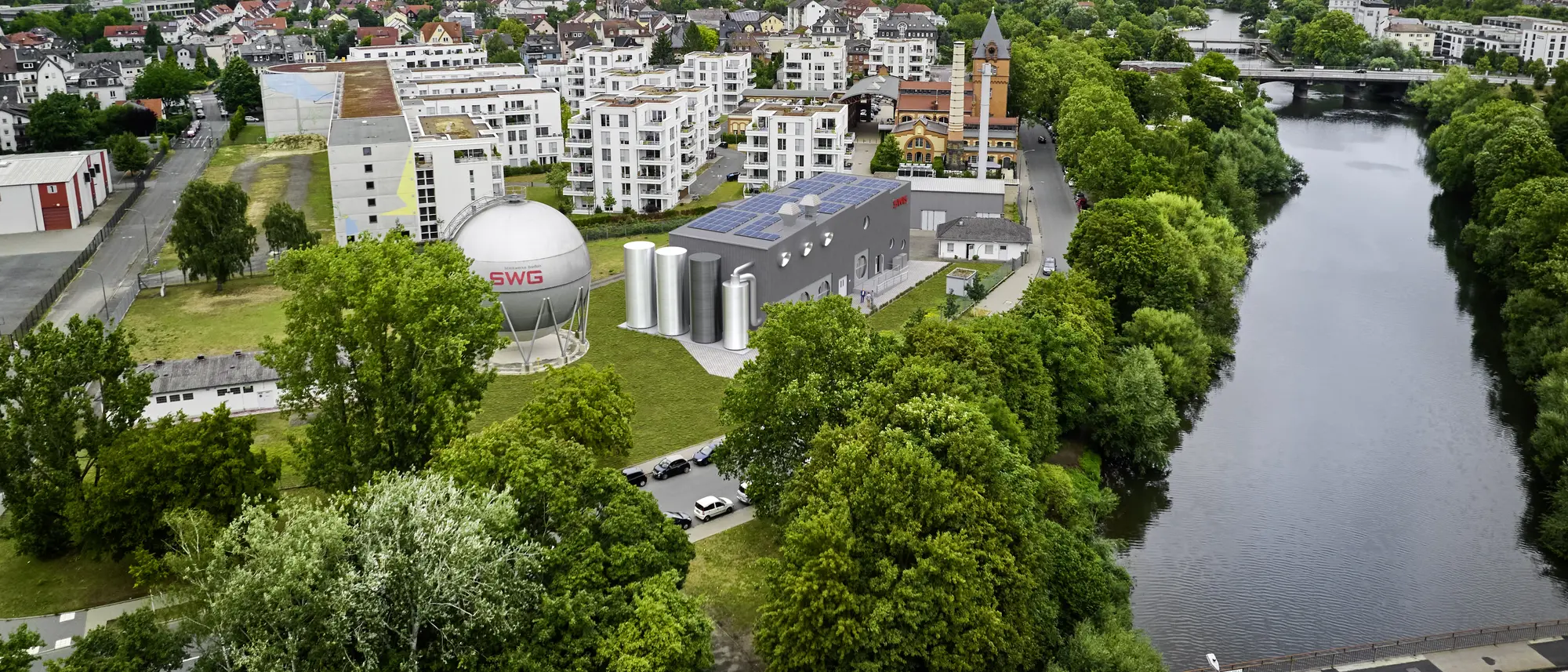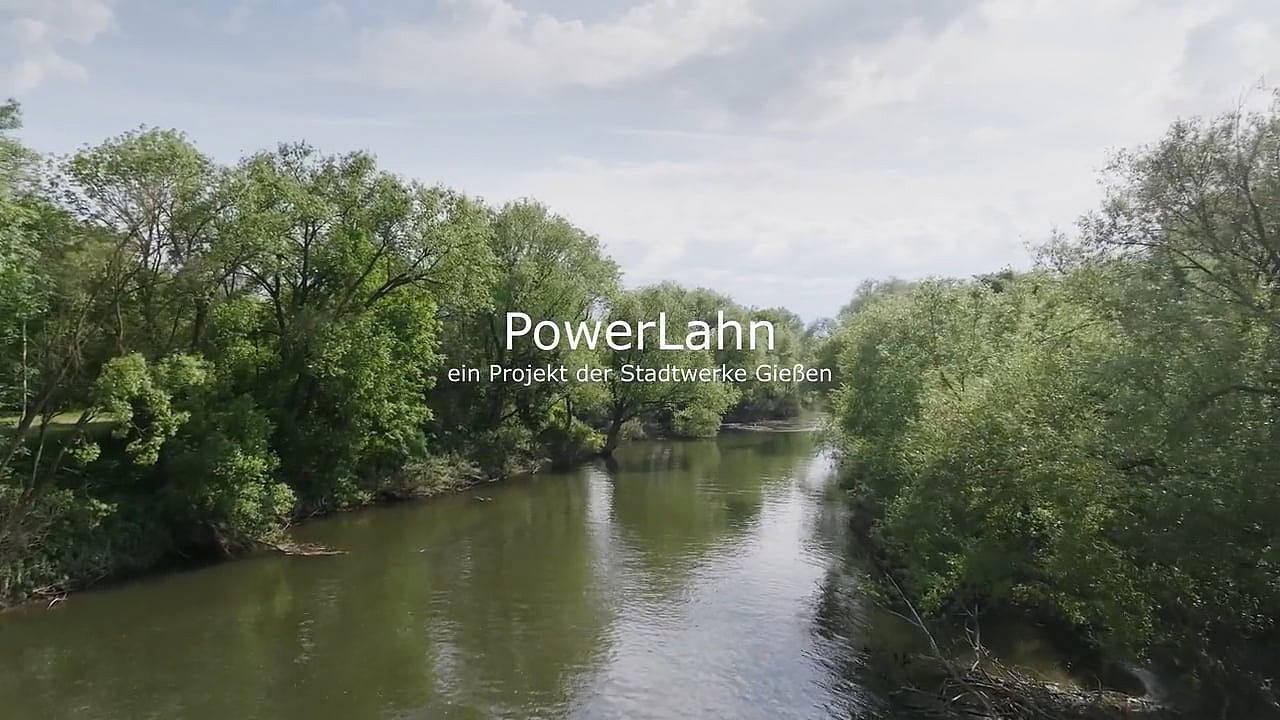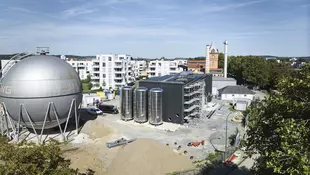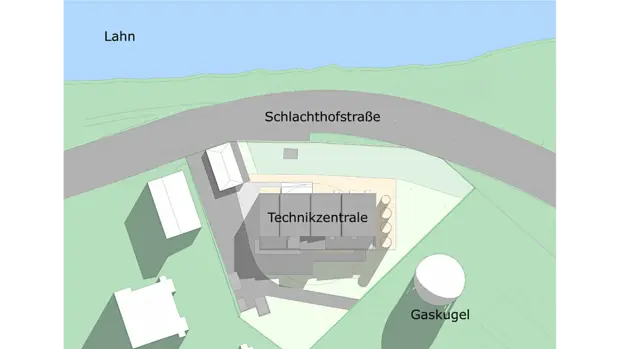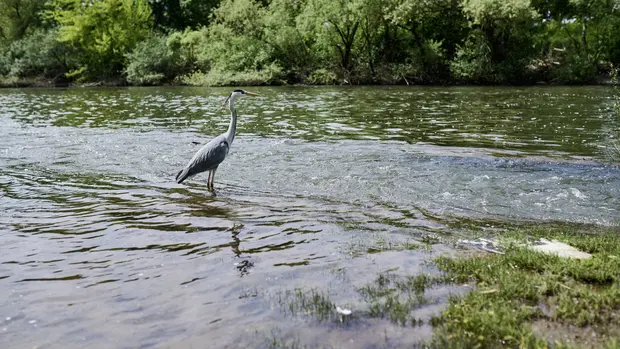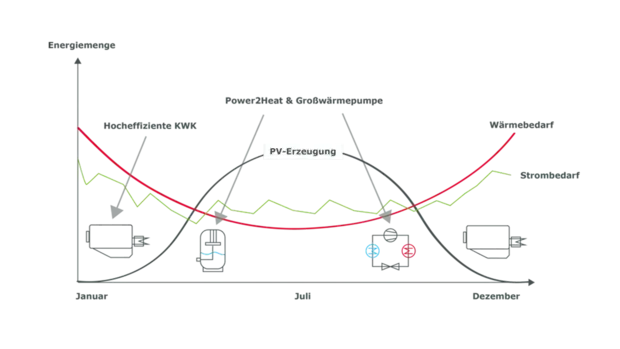Clever use of energy from the Lahn
It is due to go into operation at the end of June 2026: Stadtwerke Gießen's first iKWK plant. The abbreviation iKWK stands for innovative combined heat and power generation. This refers to an efficient and climate-friendly energy generation system that is subsidised by the state.
Explanatory film on the PowerLahn project
How can the River Lahn in Giessen be utilised as a heat source? What does iKWK actually mean? And how does PowerLahn contribute to the energy transition in Giessen? These questions are answered in the explanatory film "PowerLahn" with presenter Willi Weitzel. He provides an insight into this pioneering project and explains the technology behind this system. Find out how large heat pumps, combined heat and power plants and a power-to-heat module together utilise the energy from the River Lahn to generate heat for around 3,900 homes.
Components of the iKWK system at SWG
The iKWK system from Stadtwerke Gießen consists of
- three heat pumps (the i-component)
- two combined heat and power plants (CHP)
- a power-to-heat plant (P2H)
The three components are connected via a shared control and instrumentation system and a shared heating network (see diagram). In addition, a photovoltaic system is planned on the roof of the energy centre on the River Lahn to power the heat pump itself.
There are currently only a few comparable iKWK systems in Germany that include a large heat pump as a component.
Utilising the warmth of the Lahn
The three large heat pumps in Schlachthofstrasse extract thermal energy from the River Lahn. To do this, the pumps extract water from the river and utilise its environmental heat. As the river water passes through the heat pumps, the water is cooled and the thermal energy is extracted before it is returned to the Lahn. The energy obtained is fed into the district heating network via the heat pumps. In this way, the large heat pumps contribute to climate-neutral energy generation.
Environmentally friendly use of the water
All water is fed back into the Lahn after thermal utilisation, i.e. there is no water loss. Only heat is extracted in the process. There is no material or chemical impairment of the entire process. On the contrary: the river water is mixed hydraulically and thermally to such an extent when it is reintroduced into the Lahn that only minimal temperature differences are to be expected for the water as a whole.
Facts, figures and data
| Thermal output | 2 x 4,726 kWth |
| Electrical output | 2 x 4,507 kWel |
| Secured running time | September to April |
| Heat generation | 49,995 MWh |
| Electricity generation | 46,934 MWh |
| Homes supplied (heat) | around 6,800 |
| Average households (electricity) | around 21,300 |
| CO2 savings (compared to turbine system) | 2,736 tonnes of CO2/a |
Generate energy efficiently
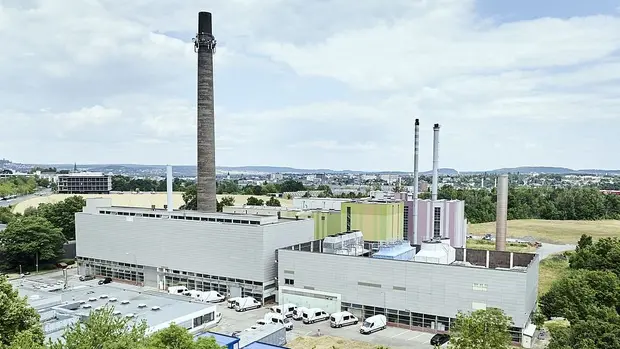
In addition to the large heat pumps, the PowerLahn project also includes two CHP units with an output of 4.5 megawatts (MWth) each and a power-to-heat module with an output of 3 MWth. The CHP units generate heat and electricity highly efficiently according to the principle of combined heat and power (CHP). The power-to-heat module converts electricity into heat and is used when there is a surplus of electricity that cannot be utilised.
Both components (CHP and P2H module) will be installed on the site of the combined heat and power plant in Leihgesterner Weg. They will replace the older gas turbines of HKW Gießen GmbH at the site.
Interaction of the components over the course of the year
The large heat pumps are not in use during the cold winter months. During this time, the two CHP units primarily cover the increased demand for electricity and heat in winter. By utilising combined heat and power generation, an overall efficiency of approx. 95% is achieved.
The large heat pumps run during the warm months (April to October). During this time, they replace the neighbouring generation plants in the supply area. If there is a surplus of electricity that cannot be utilised, the power-to-heat system provides support and converts surplus electricity into heat. In summer, the photovoltaic system also generates electricity, which is used efficiently to operate the large heat pumps.
FAQ
Conversion work has already begun at the Leihgesterner Weg site. Construction of the energy centre in Schlachthofstrasse is scheduled for late summer 2024.
The energy centre and the inlet and outlet structure are scheduled for completion by June 2026.
The iKWK system is scheduled to go into operation by mid-2026.
The overall project has an investment volume of around 30 million euros.
The subsidy mechanism is based on the operation of the plant. The iKWK subsidy subsidises the amount of electricity fed into the grid by the CHP plant for a maximum of 3,500 full utilisation hours per year.
The inlet and outlet structure will be built directly on the bank opposite the technical centre (Schlachthofstrasse side). Both structures are designed in such a way that they can be built with minimal intervention and the areas are subsequently renaturalised.
The operation of the heat pumps depends on the temperature level of the Lahn. This is for both technical and authorisation reasons. We can currently guarantee continuous operation of the system from April to October.
Operation can extend beyond the specified running times.
Long-term data series on the water temperature of the Lahn were taken into account when designing the system. The minimum possible inlet temperature on the river water side is 5 degrees Celsius.
The Lahn has an average water flow (depending on the time of year) of 9.7 m³/s to 48.6 m³/s (cubic metres per second). A volume flow of approx. 0.3 m³/s is actually withdrawn during operation of the plant.
The extracted water is cooled by approx. 3 to 5 Kelvin. The total cooling of the water at the discharge point is therefore less than 0.5 Kelvin.
The power-to-heat module serves to improve the integration of renewable energies through sector coupling. Particularly at times when high electricity production from renewable energies meets low electricity demand, power-to-heat systems are used to generate heat from electricity, thereby preventing the curtailment of renewable generators.
The PV system with a size of approx. 52 kWp (kilowatt peak) will be installed on the roof of the energy centre and will cover part of the total electricity requirement.
